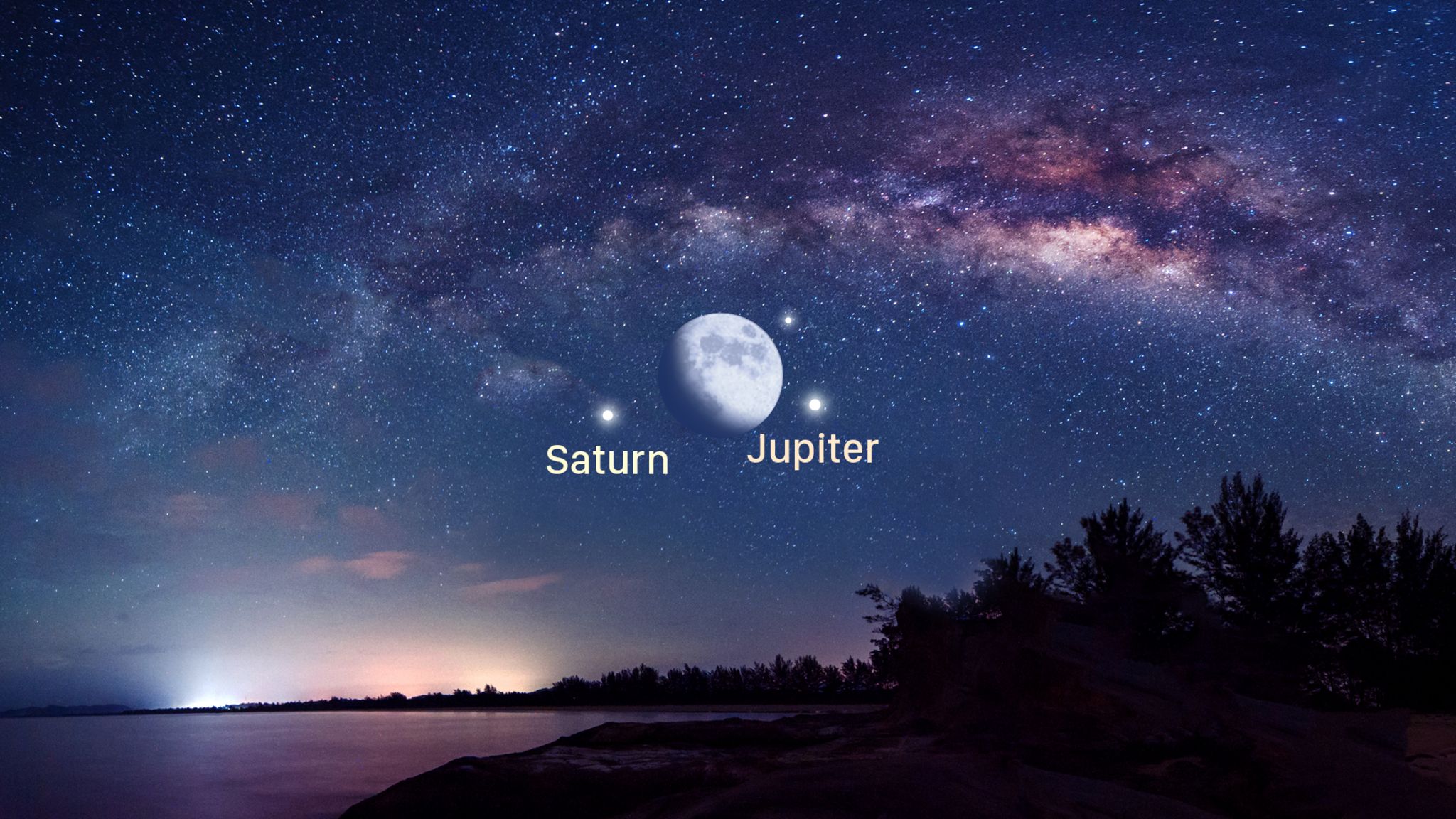Waxing Moon Close to Jupiter and Saturn
This Friday, the waxing gibbous Moon will pay Jupiter a visit. After dusk, look for Jupiter in the southwestern sky. It will set in the west at about 1:30 am local time. If you glance at the Moon and Jupiter over several hours, starting at dusk, you will see the moon’s orbit carry it farther from the planet.
On a typical night, even a backyard telescope will show you Jupiter’s two main equatorial stripes and its four Galilean moons, named Io, Europa, Callisto, and Ganymede. The moons always form a rough line flanking the planet. If you see fewer than four, then some are in front of Jupiter, or hidden behind it.
Due to Jupiter’s rapid 10-hour rotation period, the Great Red Spot (or GRS) is only observable from Earth every 2nd or 3rd night, and only during a predictable three-hour window. The GRS will be easiest to see using a medium-sized, or larger, aperture telescope on an evening of good seeing (steady air). If you’d like to see the Great Red Spot in your telescope, it will be crossing the planet after dusk on Friday, and from 10 pm to midnight EDT next Sunday.
In the southeastern sky after dusk on Sunday evening, the bright, waxing gibbous Moon will be positioned four finger widths to the right of the bright, yellowish planet Saturn. The pair will cross the sky together for most of the night and will easily appear together within the field of binoculars. To the left of this pair you also can see the bright Pluto. Observers in eastern Indonesia, most of Australia, northern New Zealand, Melanesia, and Polynesia (except Hawaii) will see the Moon occult Saturn on August 12.
Yellow-tinted Saturn will remain visible from dusk until about 4 am local time. The ringed planet’s position in the sky is just to the upper left (celestial east) of the stars that form the teapot-shaped constellation of Sagittarius (the Archer). Saturn is quite a bit dimmer than Jupiter. To find it, look about 3 fist diameters to the lower left (east) of Jupiter. Once the sky is dark, even a small telescope will show Saturn's rings and several of its brighter moons, especially Titan! Because Saturn’s axis of rotation is tipped about 27° from vertical (a bit more than Earth’s axis), we can see the top surface of its rings, and its moons can appear above, below, or to either side of the planet.
Check the current position of these planets according to your location in Star Walk 2 app, and don’t forget to dust off your telescope!




